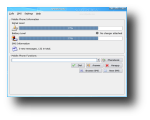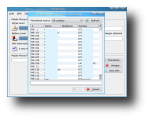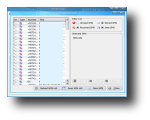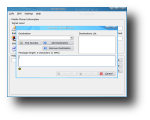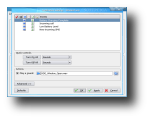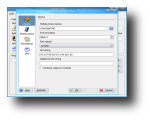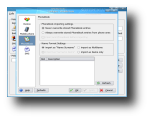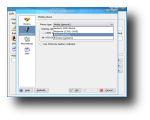KMobileTools is a nice application for KDE that enables Linux users to control mobile phones with their PCs. It offers quite a large number of features but unfortunately, some of them are pretty useless, while other important functions are missing. Even so, KMobileTools will definitely enable you to handle your mobile more easily. The authors claim that this application has been tested on Motorola, Nokia, Siemens, Sony Ericsson and LG mobile phones, but I could only test it on a Nokia 6230i phone and it worked flawlessly.
This is an OpenSource project (GPL2 licensed), written in C++ using Qt and KDE libraries. Moreover, it uses KParts technology which offers compatibility with applications such as Kontact, KAddressBook, KMail and much more. This compatibility enables you to export or import contacts from the phone's address book into/from KAddressBook. Also, it allows you to read, write SMSs and export them from/into KMail. Basically, the limit will be set by your phone capabilities.
Because I'm running Fedora Core, I've decided to resort to YUM to install KMobileTools on my system. The whole process went smooth, no crazy dependencies were required and in about one minute, my system was ready to run this application. Installing it was the easy part, making the application work completely with my phone was not that easy on the other hand. I've plugged in the USB cable into my phone and started the application. (I've answered "No" when my phone asked if I wanted to use it as a storage device). The first thing I've seen was an error saying something about how the application couldn't find a phone attached to the selected device.
NOTE: To quickly find out what device your phone has been connected to, go into a terminal and type:
After I've set the correct device, the main KMobileTools window started showing the signal and battery level, as well as whether the charger is attached to the phone or not and the number of new and total received SMSs. The lower part of the main window had some functions that could come handy for a lot of people. These functions allow you to dial, answer and hang-up a telephone conversation. If you decide to dial a number, you can either type it in the number field or open the phone book and select it from there. The last two functions were "Browse SMS" and "New SMS". It's pretty self-explanatory what they do, but I had a small problem with them. The Browse SMS function refused to list any SMSs until I opened-up the main settings window, went to the SMS tab, clicked "Refresh" and checked both discovered slots.
These functions can be reached also from the Calls and SMS menus. The Settings menu however, contains unique items so to speak. Here, you can set the visual and/or audio notifications on events like battery charging complete, incoming call, low battery and so on. Another item is called "Reinitialize GSM device", function that will most likely cause a program reload, relieving you from the need of restarting the application when any changes occurred. The last item from the Settings menu is the "Serial Terminal" item which will open some kind of console that looks pretty scary for everyone that's not a mobile phones guru.
KMobileTools can be configured through the "Main settings" item in the Settings menu. Clicking this item will open a Settings window divided into 4 sections: Device, Mobile phone, Phone Book and SMS. In the first section, you'll find general settings related to the mobile phone device (the one I've written about earlier, /dev/ttyACM0), text encoding, port speed and a few other advanced options. From the Mobile phone section, you can choose the phone type, Nokia (generic), Ericsson (generic), Motorola (C359, C650) or Generic GSM Device. Also, you can choose whether to use a CKPD or ATD system for dialing. The Phone Book section allows you to change importing and name format settings, as well as choosing what phone slots to use for showing contacts in the phone. Finally, from the SMS section, you can choose which memory slot to use for reading and writing SMS.
The Good
KMobileTools is a nice application for KDE which enables Linux users to handle their mobile phones more easily. It allows them to dial, answer or hang-up a phone conversation, as well as reading and sending SMSs from their PCs. It also enables users to import/export phone address book from/into KDE AddressBook.
The Bad
Compared to original phone management software which arrives with every modern mobile phone, KMobileTools lacks an important feature: browsing through the phone?s memory. At least, for a Nokia phone with a memory card, you can answer Yes when the phone asks you if you want to use it as a storage device and then mount the /dev/sda device to an empty directory on your Linux system. However, I couldn't find a way to browse the phone's memory from Linux. Moreover, editing and deleting address book contacts or SMSs only works partially or doesn't work at all.
The Truth
Even if browsing the phone?s memory function lacks or it's pretty difficult to use, KMobileTools offers other powerful features that enable Linux users to handle their mobile phones more easily and also, allows them to import/export phone book contacts from the phone from/into the KDE AddressBook. Moreover, the future version (beta right now) is quite promising, more extended and with advanced features being announced. Overall, KMobileTools is a Linux application that comes useful for everyone using Linux and owning a modern phone and a USB cable (or bluetooth accessories on both phone and PC).
Check out some screenshots below:
 14 DAY TRIAL //
14 DAY TRIAL // 